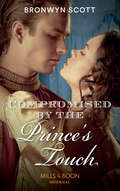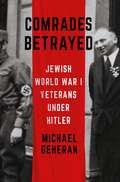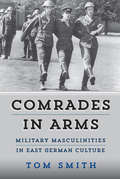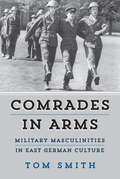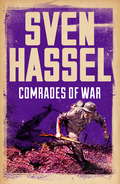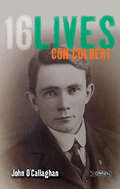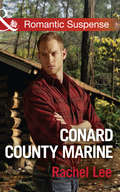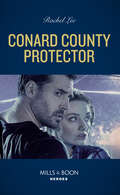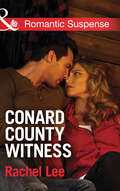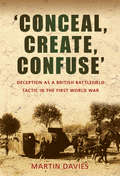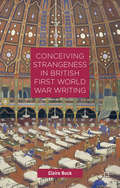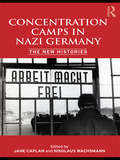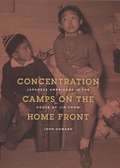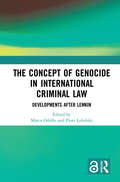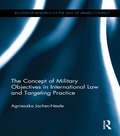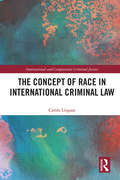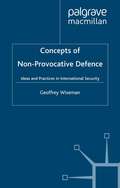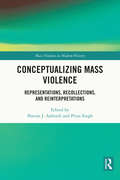- Table View
- List View
Compromised (Alpha Ops #5)
by Emmy CurtisIt was supposed to be the happiest day of her life. But when her wedding erupts in gunfire, Sadie Walker realizes this is not the life she wants-her fiancé's work with Delta Force will always cast a shadow over their relationship. After leaving the hard-muscled hero at the altar, she thinks she'll never see him again . . . until a chance encounter reveals that he still has a strong grip on her heart. On a covert assignment overseas, Simon Tennant is shocked when he spots Sadie with another man. Jealousy flares, as does an irresistible urge to keep her protected. Amid a dangerous game of international espionage, he'll have to convince Sadie just how perfect they've always been together. This time, nothing will take precedence over winning her back, no matter the cost to his cover-or his life . . . Alpha Ops Series: Book 1: Dangerous Territory (novella)Book 2: Over the LineBook 3: Pushing the Limit Book 4: BlowbackBook 5: CompromisedBook 6: Risk of Exposure
Compromised By The Prince’s Touch: His Convenient Marchioness Compromised By The Prince's Touch The Captain's Disgraced Lady (Russian Royals of Kuban #1)
by Bronwyn ScottAn irresistible royal seduction… Daring Prince Nikolay Baklanov feels London is worlds away from his life of battle and revolution in Kuban. But then the Russian ambassador’s daughter, beautiful Klara Grigorieva, approaches him with her father’s dangerous proposition…
Comrades Betrayed: Jewish World War I Veterans under Hitler (Battlegrounds: Cornell Studies in Military History)
by Michael GeheranAt the end of 1941, six weeks after the mass deportations of Jews from Nazi Germany had begun, Gestapo offices across the Reich received an urgent telex from Adolf Eichmann, decreeing that all war-wounded and decorated Jewish veterans of World War I be exempted from upcoming "evacuations." Why this was so, and how Jewish veterans at least initially were able to avoid the fate of ordinary Jews under the Nazis, is the subject of Comrades Betrayed. Michael Geheran deftly illuminates how the same values that compelled Jewish soldiers to demonstrate bravery in the front lines in World War I made it impossible for them to accept passively, let alone comprehend, persecution under Hitler. After all, they upheld the ideal of the German fighting man, embraced the fatherland, and cherished the bonds that had developed in military service. Through their diaries and private letters, as well as interviews with eyewitnesses and surviving family members and records from the police, Gestapo, and military, Michael Geheran presents a major challenge to the prevailing view that Jewish veterans were left isolated, neighborless, and having suffered a social death by 1938. Tracing the path from the trenches of the Great War to the extermination camps of the Third Reich, Geheran exposes a painful dichotomy: while many Jewish former combatants believed that Germany would never betray them, the Holocaust was nonetheless a horrific reality. In chronicling Jewish veterans' appeal to older, traditional notions of comradeship and national belonging, Comrades Betrayed forces reflection on how this group made use of scant opportunities to defy Nazi persecution and, for some, to evade becoming victims of the Final Solution.
Comrades in Arms: Military Masculinities in East German Culture
by Tom SmithWithout question, the East German National People’s Army was a profoundly masculine institution that emphasized traditional ideals of stoicism, sacrifice, and physical courage. Nonetheless, as this innovative study demonstrates, depictions of the military in the film and literature of the GDR were far more nuanced and ambivalent. Departing from past studies that have found in such portrayals an unchanging, idealized masculinity, Comrades in Arms shows how cultural works both before and after reunification place violence, physical vulnerability, and military theatricality, as well as conscripts’ powerful emotions and desires, at the center of soldiers’ lives and the military institution itself.
Comrades in Arms: Military Masculinities in East German Culture
by Tom SmithWithout question, the East German National People’s Army was a profoundly masculine institution that emphasized traditional ideals of stoicism, sacrifice, and physical courage. Nonetheless, as this innovative study demonstrates, depictions of the military in the film and literature of the GDR were far more nuanced and ambivalent. Departing from past studies that have found in such portrayals an unchanging, idealized masculinity, Comrades in Arms shows how cultural works both before and after reunification place violence, physical vulnerability, and military theatricality, as well as conscripts’ powerful emotions and desires, at the center of soldiers’ lives and the military institution itself.
Comrades of War (Sven Hassel War Classics)
by Sven HasselThere were not so much people as animals. Sometimes small and frightened, huddling together in cattle cars, wounds gaping, tongues swelling even as they licked the moist frost from the walls...Grievously wounded - having survived the operating table and the perilous journey West on a freezing freight train - Sven Hassel and his comrades find themselves behind the lines in a Hamburg hospital. The Reich is a hotbed of lies, betrayal and propaganda. Disgusted by the Nazi cause, the comrades drink themselves into oblivion, visit brothels where women dance naked on saloon tables and reach for home comforts before they return to the dreaded Russian Front. Because Hitler's war must go on... COMRADES OF WAR is a gritty portrayal of war's harsh realities and the fear and fanaticism at the heart of The Third Reich.Sven Hassel's unflinching narrative is based on his own experiences in the German Army. He began writing his first novel, LEGION OF THE DAMNED in a prisoner of war camp at the end of the Second World War.
Con Colbert: 16Lives (16lives Ser. #12)
by John O'CallaghanCon Colbert was one of the lesser-known leaders of the 1916 Rising. From a comfortable background in Newcastlewest, County Limerick, he moved to Dublin aged fifteen and worked as a junior clerk in a bakery. Already politically radicalised, he became captain of the first troop of Na Fianna Éireann, the republican boy-scout movement. An unswerving patriot and idealist, he worked tirelessly for the dream of an Irish-speaking, independent republic. Even before his execution, Colbert was held up as an icon and a role model for the Irish Volunteers. Colbert commanded a company at Watkins’ Brewery and at Jameson’s Distillery during the Rising. Inspiring men by example, he showed no fear in the face of danger and confronted his own death with equanimity. Con Colbert was executed at Kilmainham Gaol on 8 May 1916, aged twenty-seven.
Conard County Marine: Conard County Marine High-stakes Colton Cold Case Recruit Safe In His Sight (Conard County: The Next Generation #31)
by Rachel LeeFrom New York Times bestselling author Rachel Lee comes a story of one woman's survival and her protector's promise to find answers
Conard County Protector (Conard County: The Next Generation #53)
by Rachel LeeBack in town, and back under fire
Conard County Witness: Conard County Witness His Christmas Assignment Agent Gemini Risk It All (Conard County: The Next Generation #27)
by Rachel LeeStalked by a relentless killer…
'Conceal, Create, Confuse': Deception as a British Battlefield Tactic in the First World War
by Martin DaviesThis is the story of the British Army's endeavours during the Great War to deceive the enemy and trick him into weakening his defences and redeploying his reserves. In this year-by-year account, Martin Davies shows how Sir John French and Sir Douglas Haig actively encouraged their Army commanders to employ trickery so that all attacks should come as a 'complete surprise' to the enemy. The methods of concealment of real military artefacts and the creation of dummy ones were ingenious enough but the real art lay in the development of geographically dispersed deception plans which disguised the real time and place of attack and forced the enemy to defend areas threatened by fake operations. Some of these plans, such as disguising mules as tanks and creating dummy airfields bordered on the farcical but were often amazingly effective. The driving force behind the deception plans was GHQ and the Army commanders, further dispelling the myth of 'Lions led by Donkeys'. Evidence shows that the British Army employed deception to advantage in all their theatres of operation.
Conceiving Strangeness in British First World War Writing
by C. BuckThis book reframes British First World War literature within Britain's history as an imperial nation. Rereading canonical war writers Siegfried Sassoon and Edmund Blunden, alongside war writing by Enid Bagnold, E. M. Forster, Mulk Raj Anand, Roly Grimshaw and others, the book makes clear that the Great War was more than a European war.
Concentration Camps in Nazi Germany: The New Histories
by Jane Caplan Nikolaus WachsmannThe notorious concentration camp system was a central pillar of the Third Reich, supporting the Nazi war against political, racial and social outsiders whilst also intimidating the population at large. Established during the first months of the Nazi dictatorship in 1933, several million men, women and children of many nationalities had been incarcerated in the camps by the end of the Second World War. At least two million lost their lives. This comprehensive volume offers the first overview of the recent scholarship that has changed the way the camps are studied over the last two decades. Written by an international team of experts, the book covers such topics as the earliest camps; social life, work and personnel in the camps; the public face of the camps; issues of gender and commemoration; and the relationship between concentration camps and the Final Solution. The book provides a comprehensive introduction to the current historiography of the camps, highlighting the key conclusions that have been made, commenting on continuing areas of debate, and suggesting possible directions for future research.
Concentration Camps in Nazi Germany: The New Histories
by Nikolaus Wachsmann Jane CaplanThe notorious concentration camp system was a central pillar of the Third Reich, supporting the Nazi war against political, racial and social outsiders whilst also intimidating the population at large. Established during the first months of the Nazi dictatorship in 1933, several million men, women and children of many nationalities had been incarcerated in the camps by the end of the Second World War. At least two million lost their lives. This comprehensive volume offers the first overview of the recent scholarship that has changed the way the camps are studied over the last two decades. Written by an international team of experts, the book covers such topics as the earliest camps; social life, work and personnel in the camps; the public face of the camps; issues of gender and commemoration; and the relationship between concentration camps and the Final Solution. The book provides a comprehensive introduction to the current historiography of the camps, highlighting the key conclusions that have been made, commenting on continuing areas of debate, and suggesting possible directions for future research.
Concentration Camps on the Home Front: Japanese Americans in the House of Jim Crow
by John HowardWithout trial and without due process, the United States government locked up nearly all of those citizens and longtime residents who were of Japanese descent during World War II. Ten concentration camps were set up across the country to confine over 120,000 inmates. Almost 20,000 of them were shipped to the only two camps in the segregated South—Jerome and Rohwer in Arkansas—locations that put them right in the heart of a much older, long-festering system of racist oppression. The first history of these Arkansas camps, Concentration Camps on the Home Front is an eye-opening account of the inmates’ experiences and a searing examination of American imperialism and racist hysteria. While the basic facts of Japanese-American incarceration are well known, John Howard’s extensive research gives voice to those whose stories have been forgotten or ignored. He highlights the roles of women, first-generation immigrants, and those who forcefully resisted their incarceration by speaking out against dangerous working conditions and white racism. In addition to this overlooked history of dissent, Howard also exposes the government’s aggressive campaign to Americanize the inmates and even convert them to Christianity. After the war ended, this movement culminated in the dispersal of the prisoners across the nation in a calculated effort to break up ethnic enclaves. Howard’s re-creation of life in the camps is powerful, provocative, and disturbing. Concentration Camps on the Home Front rewrites a notorious chapter in American history—a shameful story that nonetheless speaks to the strength of human resilience in the face of even the most grievous injustices.
Concentration Camps on the Home Front: Japanese Americans in the House of Jim Crow
by John HowardWithout trial and without due process, the United States government locked up nearly all of those citizens and longtime residents who were of Japanese descent during World War II. Ten concentration camps were set up across the country to confine over 120,000 inmates. Almost 20,000 of them were shipped to the only two camps in the segregated South—Jerome and Rohwer in Arkansas—locations that put them right in the heart of a much older, long-festering system of racist oppression. The first history of these Arkansas camps, Concentration Camps on the Home Front is an eye-opening account of the inmates’ experiences and a searing examination of American imperialism and racist hysteria. While the basic facts of Japanese-American incarceration are well known, John Howard’s extensive research gives voice to those whose stories have been forgotten or ignored. He highlights the roles of women, first-generation immigrants, and those who forcefully resisted their incarceration by speaking out against dangerous working conditions and white racism. In addition to this overlooked history of dissent, Howard also exposes the government’s aggressive campaign to Americanize the inmates and even convert them to Christianity. After the war ended, this movement culminated in the dispersal of the prisoners across the nation in a calculated effort to break up ethnic enclaves. Howard’s re-creation of life in the camps is powerful, provocative, and disturbing. Concentration Camps on the Home Front rewrites a notorious chapter in American history—a shameful story that nonetheless speaks to the strength of human resilience in the face of even the most grievous injustices.
The Concept of Genocide in International Criminal Law: Developments after Lemkin
by Marco OdelloThis book presents a review of historical and emerging legal issues that concern the interpretation of the international crime of genocide. The Polish legal expert Raphael Lemkin formulated the concept of genocide during the Nazi occupation of Europe, and it was then incorporated into the 1948 Convention on the Prevention and Punishment of the Crime of Genocide. This volume looks at the issues that are raised both by the existing international law definition of genocide and by the possible developments that continue to emerge under international criminal law. The authors consider how the concept of genocide might be used in different contexts, and see whether the definition in the 1948 convention may need some revision, also in the light of the original ideas that were expressed by Lemkin. The book focuses on specific themes that allow the reader to understand some of the problems related to the legal definition of genocide, in the context of historical and recent developments. As a valuable contribution to the debate on the significance, meaning and application of the crime of genocide the book will be essential reading for students and academics working in the areas of Legal History, International Criminal Law, Human Rights, and Genocide Studies.
The Concept of Genocide in International Criminal Law: Developments after Lemkin
by Marco Odello Piotr 321 Ubi 324 SkiThis book presents a review of historical and emerging legal issues that concern the interpretation of the international crime of genocide. The Polish legal expert Raphael Lemkin formulated the concept of genocide during the Nazi occupation of Europe, and it was then incorporated into the 1948 Convention on the Prevention and Punishment of the Crime of Genocide. This volume looks at the issues that are raised both by the existing international law definition of genocide and by the possible developments that continue to emerge under international criminal law. The authors consider how the concept of genocide might be used in different contexts, and see whether the definition in the 1948 convention may need some revision, also in the light of the original ideas that were expressed by Lemkin. The book focuses on specific themes that allow the reader to understand some of the problems related to the legal definition of genocide, in the context of historical and recent developments. As a valuable contribution to the debate on the significance, meaning and application of the crime of genocide the book will be essential reading for students and academics working in the areas of Legal History, International Criminal Law, Human Rights, and Genocide Studies.
The Concept of Military Objectives in International Law and Targeting Practice (Routledge Research in the Law of Armed Conflict)
by Agnieszka Jachec-NealeThe concept that certain objects and persons may be legitimately attacked during armed conflicts has been well recognised and developed through the history of warfare. This book explores the relationship between international law and targeting practice in determining whether an object is a lawful military target. By examining both the interpretation and its post-ratification application this book provides a comprehensive analysis of the definition of military objective adopted in 1977 Additional Protocol I to the four 1949 Geneva Conventions and its use in practice. Tackling topical issues such as the targeting of TV and radio stations or cyber targets, Agnieszka Jachec-Neale analyses the concept of military objective within the context of both modern military doctrine and the major coalition operations which have been undertaken since it was formally defined. This monograph will be of great interest to students and scholars of international law and the law of armed conflict, as well as security studies and international relations.
The Concept of Military Objectives in International Law and Targeting Practice (Routledge Research in the Law of Armed Conflict)
by Agnieszka Jachec-NealeThe concept that certain objects and persons may be legitimately attacked during armed conflicts has been well recognised and developed through the history of warfare. This book explores the relationship between international law and targeting practice in determining whether an object is a lawful military target. By examining both the interpretation and its post-ratification application this book provides a comprehensive analysis of the definition of military objective adopted in 1977 Additional Protocol I to the four 1949 Geneva Conventions and its use in practice. Tackling topical issues such as the targeting of TV and radio stations or cyber targets, Agnieszka Jachec-Neale analyses the concept of military objective within the context of both modern military doctrine and the major coalition operations which have been undertaken since it was formally defined. This monograph will be of great interest to students and scholars of international law and the law of armed conflict, as well as security studies and international relations.
The Concept of Race in International Criminal Law (International and Comparative Criminal Justice)
by Carola LingaasMembers of racial groups are protected under international law against genocide, persecution, and apartheid. But what is race – and why was this contentious term not discussed when drafting the Statute of the International Criminal Court? Although the law uses this term, is it legitimate to talk about race today, let alone convict anyone for committing a crime against a racial group? This book is the first comprehensive study of the concept of race in international criminal law. It explores the theoretical underpinnings for the crimes of genocide, apartheid, and persecution, and analyses all the relevant legal instruments, case law, and scholarship. It exposes how the international criminal tribunals have largely circumvented the topic of race, and how incoherent jurisprudence has resulted in inconsistent protection. The book provides important new interpretations of a problematic concept by subjecting it to a multifaceted and interdisciplinary analysis. The study argues that race in international criminal law should be constructed according to the perpetrator's perception of the victims’ ostensible racial otherness. The perpetrator’s imagination as manifested through his behaviour defines the victims’ racial group membership. It will be of interest to students and practitioners of international criminal law, as well as those studying genocide, apartheid, and race in domestic and international law.
The Concept of Race in International Criminal Law (International and Comparative Criminal Justice)
by Carola LingaasMembers of racial groups are protected under international law against genocide, persecution, and apartheid. But what is race – and why was this contentious term not discussed when drafting the Statute of the International Criminal Court? Although the law uses this term, is it legitimate to talk about race today, let alone convict anyone for committing a crime against a racial group? This book is the first comprehensive study of the concept of race in international criminal law. It explores the theoretical underpinnings for the crimes of genocide, apartheid, and persecution, and analyses all the relevant legal instruments, case law, and scholarship. It exposes how the international criminal tribunals have largely circumvented the topic of race, and how incoherent jurisprudence has resulted in inconsistent protection. The book provides important new interpretations of a problematic concept by subjecting it to a multifaceted and interdisciplinary analysis. The study argues that race in international criminal law should be constructed according to the perpetrator's perception of the victims’ ostensible racial otherness. The perpetrator’s imagination as manifested through his behaviour defines the victims’ racial group membership. It will be of interest to students and practitioners of international criminal law, as well as those studying genocide, apartheid, and race in domestic and international law.
Concepts of Non-Provocative Defence: Ideas and Practices in International Security (St Antony's Series)
by G. WisemanThis book examines the viability of non-provocative defence - the controversial idea that defensive military policies and practices reduce the risk of wars and provide a viable basis for defending a society should war break out. Drawing on case studies from Europe, the 1991 Persian Gulf War, and Asia-Pacific, the author concludes that non-provocative defence concepts remain relevant and that they can help in deterring, conducting, and settling wars.
Conceptualizing Mass Violence: Representations, Recollections, and Reinterpretations (Mass Violence in Modern History)
by Navras J. Aafreedi Priya SinghConceptualizing Mass Violence draws attention to the conspicuous inability to inhibit mass violence in myriads forms and considers the plausible reasons for doing so. Focusing on a postcolonial perspective, the volume seeks to popularize and institutionalize the study of mass violence in South Asia. The essays explore and deliberate upon the varied aspects of mass violence, namely revisionism, reconstruction, atrocities, trauma, memorialization and literature, the need for Holocaust education, and the criticality of dialogue and reconciliation. The language, content, and characteristics of mass violence/genocide explicitly reinforce its aggressive, transmuting, and multifaceted character and the consequent necessity to understand the same in a nuanced manner. The book is an attempt to do so as it takes episodes of mass violence for case study from all inhabited continents, from the twentieth century to the present. The volume studies ‘consciously enforced mass violence’ through an interdisciplinary approach and suggests that dialogue aimed at reconciliation is perhaps the singular agency via which a solution could be achieved from mass violence in the global context. The volume is essential reading for postgraduate students and scholars from the interdisciplinary fields of Holocaust and Genocide Studies, History, Political Science, Sociology, World History, Human Rights, and Global Studies.
Conceptualizing Mass Violence: Representations, Recollections, and Reinterpretations (Mass Violence in Modern History)
by Navras J. Aafreedi Priya SinghConceptualizing Mass Violence draws attention to the conspicuous inability to inhibit mass violence in myriads forms and considers the plausible reasons for doing so. Focusing on a postcolonial perspective, the volume seeks to popularize and institutionalize the study of mass violence in South Asia. The essays explore and deliberate upon the varied aspects of mass violence, namely revisionism, reconstruction, atrocities, trauma, memorialization and literature, the need for Holocaust education, and the criticality of dialogue and reconciliation. The language, content, and characteristics of mass violence/genocide explicitly reinforce its aggressive, transmuting, and multifaceted character and the consequent necessity to understand the same in a nuanced manner. The book is an attempt to do so as it takes episodes of mass violence for case study from all inhabited continents, from the twentieth century to the present. The volume studies ‘consciously enforced mass violence’ through an interdisciplinary approach and suggests that dialogue aimed at reconciliation is perhaps the singular agency via which a solution could be achieved from mass violence in the global context. The volume is essential reading for postgraduate students and scholars from the interdisciplinary fields of Holocaust and Genocide Studies, History, Political Science, Sociology, World History, Human Rights, and Global Studies.

